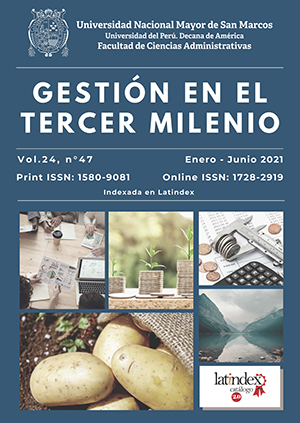The financial inclusion in Peru
DOI:
https://doi.org/10.15381/gtm.v24i47.20591Keywords:
Financial inclusion, financial system, credits, deposits, povertyAbstract
Financial inclusion is a key factor in the economic development of a nation from the point of view of access (supply), use (demand) and quality of financial services. The use and access to financial services allows the population to save surplus capital to make forecasts and future investments. Likewise, it generates a solid base of savings reducing dependence on international financial markets in the face of economic shocks. Access to an account in the financial system is the principle of financial inclusion. In the world, 68% of adults have access to an account; However, only 55% keep their account active (real access), from which a significant percentage of inactive accounts can be deduced. In Peru, 43% of adults have an account at a bank or other type of financial institution. To achieve development in financial inclusion, not only the increase in the number of active accounts must be taken into account, but also a greater use of financial services such as: payments, transfers, savings, credit and insurance.
Downloads
Published
Issue
Section
License
Copyright (c) 2021 Allan Herminio Vargas Garcia

This work is licensed under a Creative Commons Attribution 4.0 International License.
THE AUTHORS RETAIN THEIR RIGHTS:
(a) The authors retain their trademark and patent rights, and also over any process or procedure described in the article.
(b) The authors retain the right to share, copy, distribute, execute and publicly communicate the article published in Gestión en el Tercer Milenio journal (for example, place it in an institutional repository or publish it in a book), with acknowledgment of its initial publication in the Gestión en el Tercer Milenio.
(c) Authors retain the right to make a subsequent publication of their work, to use the article or any part of it (for example: a compilation of their work, lecture notes, thesis, or for a book), provided that they indicate the source. of publication (authors of the work, magazine, volume, number and date).













